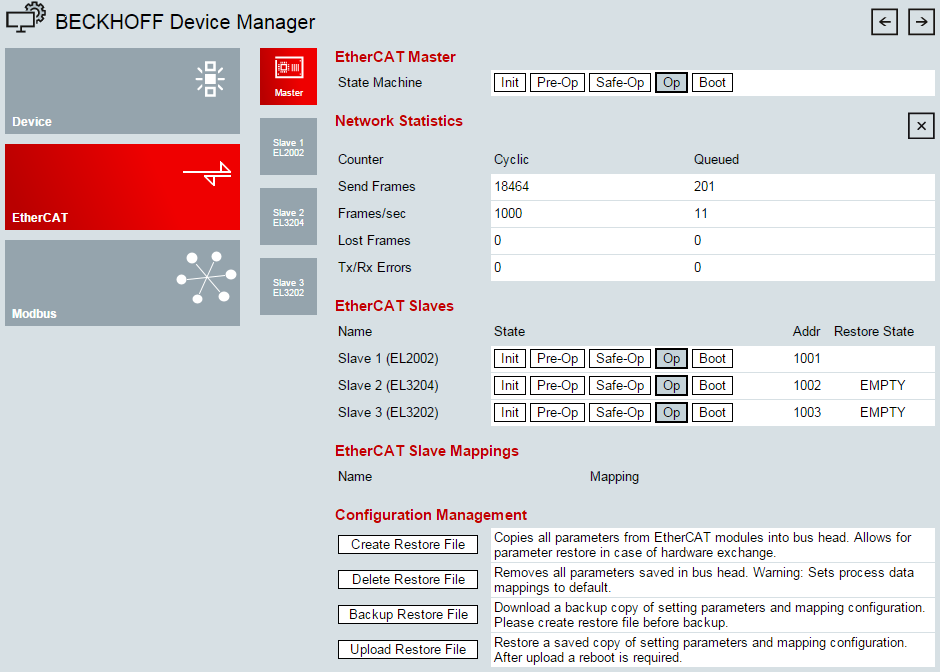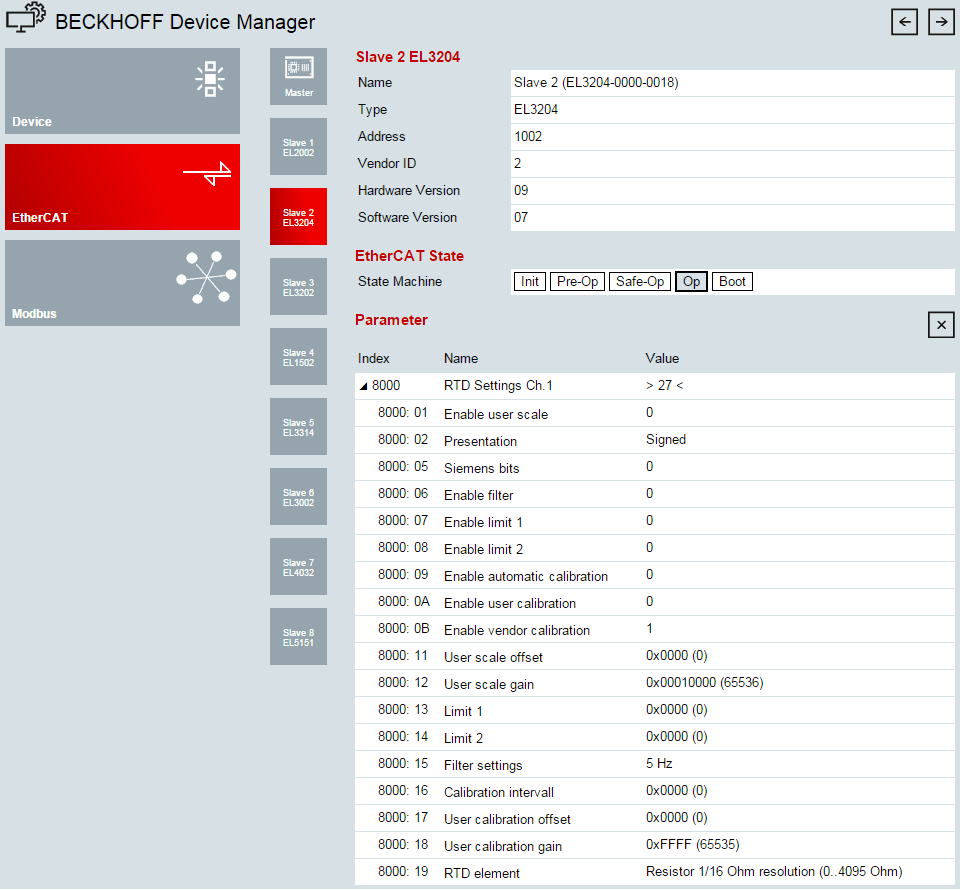EtherCAT configuration
EtherCAT Terminals can be configured and parameterized via the HTML page Beckhoff Device Manager.

EtherCAT Master
The current state of the EtherCAT Master on the EK coupler is displayed here. It should usually be in the OP state.
Network Statistics
The EtherCAT statistics are output here.
EtherCAT Slaves
Display of the EtherCAT slaves and their states. The Restore State indicates whether a Restore File has been created for the terminals.
Restore File
The Restore File is required in order to be able to parameterize EtherCAT Terminals again. If EtherCAT Terminals are exchanged and have been parameterized, this information is usually lost when the EtherCAT Terminal is exchanged. The Restore File loads the parameters to the new terminal when the coupler is started. The Restore File has to be created if you want to change the default mapping of the terminals, or if you have to.
- EMPTY
means there is no Restore File for the terminal - VALID
a valid Restore File has been created - MAPPING
The terminal mapping has been changed, but has not yet been stored in a Restore File.
EtherCAT Slaves Mappings
In some EtherCAT Terminals the process image can be changed; it must be stored in the EtherCAT master. The terminals that can be changed are displayed under "EtherCAT Slaves Mapping"; the corresponding mapping must be set and stored in the Restore file. The coupler is then restarted so that it can activate the mapping (attention: the process image is changed as a result)

Parameterization of the EtherCAT Terminals
To parameterize an EtherCAT Terminal, select the required terminal. Its objects are then displayed and can be edited if necessary. The settings are then stored in the terminal. Note that any modifications are lost if the terminal is replaced. In this case use the restore file, which contains your modifications.
 | Restore file overwrites Modbus modifications If the Restore File is used, the object parameters are always loaded into the terminal on starting the coupler. This will overwrite changes that you have made by Modbus Interface or web page. |
